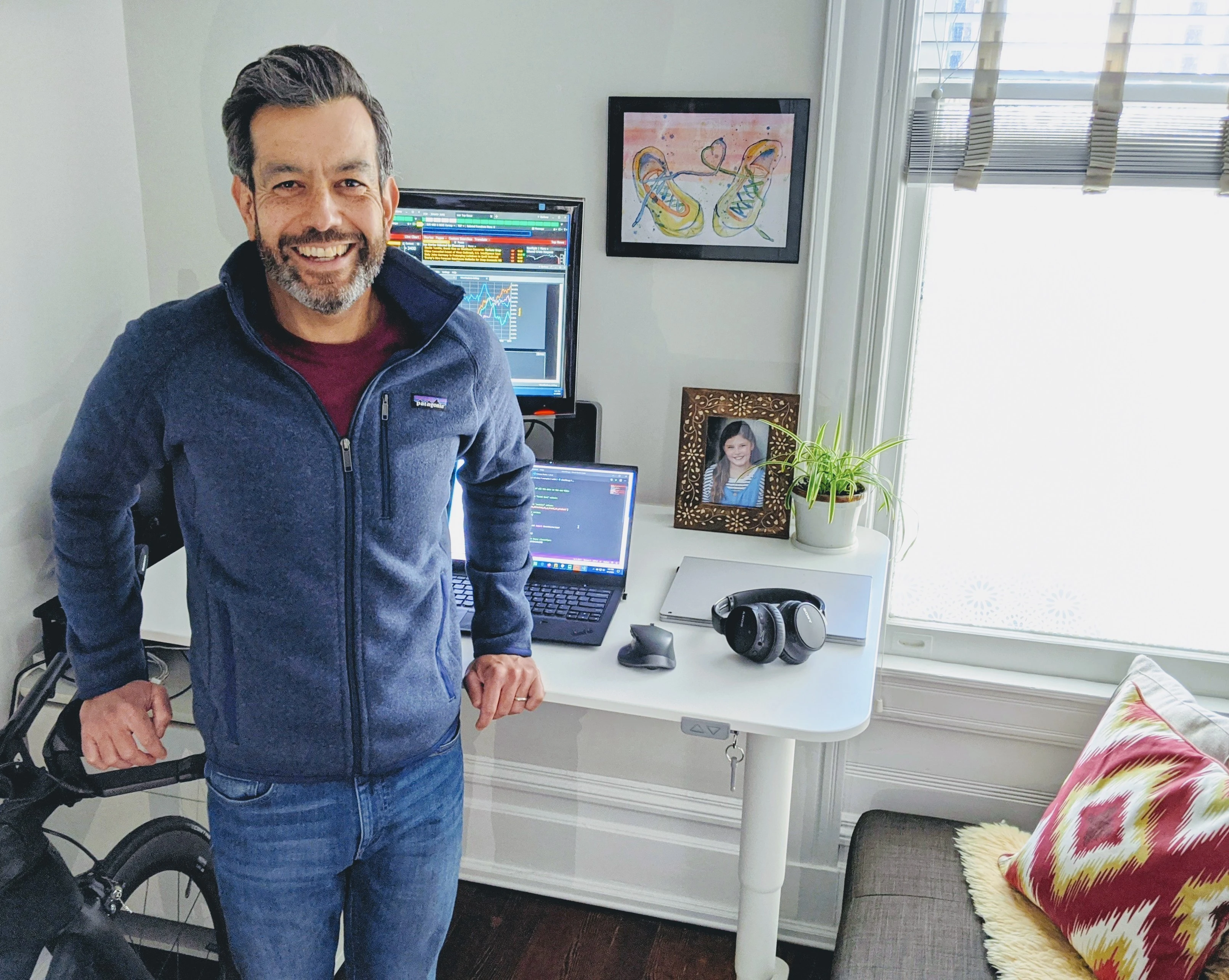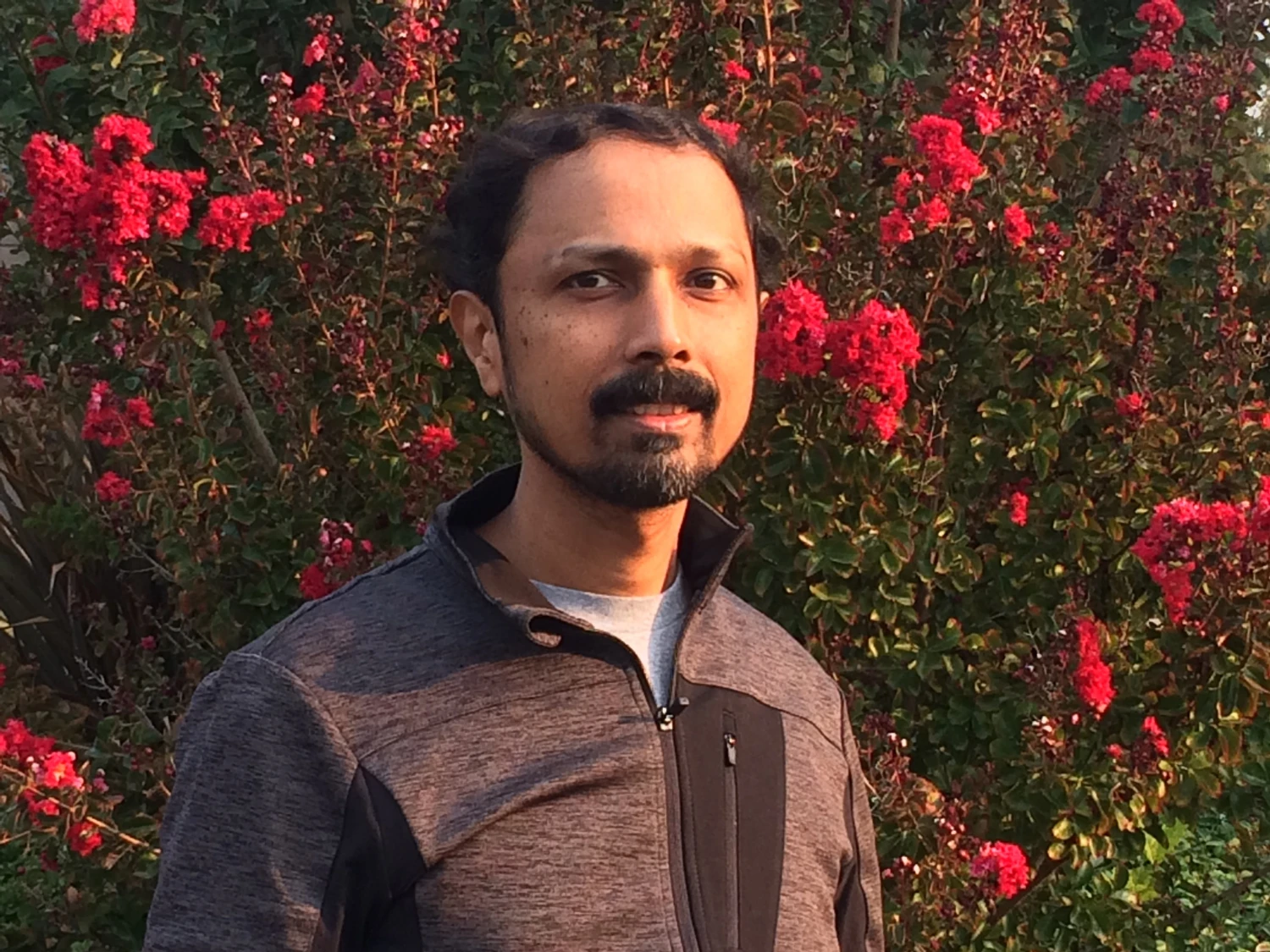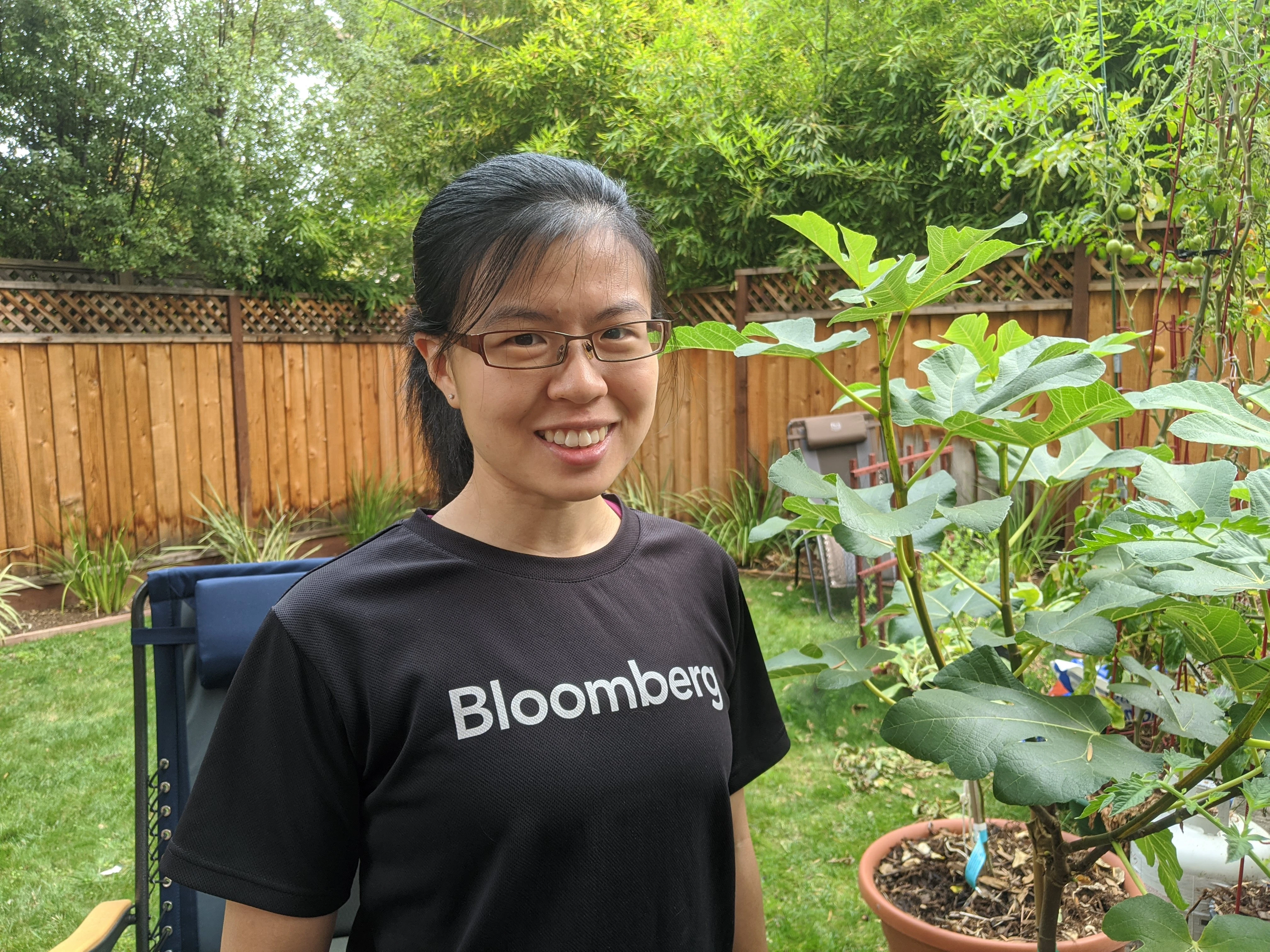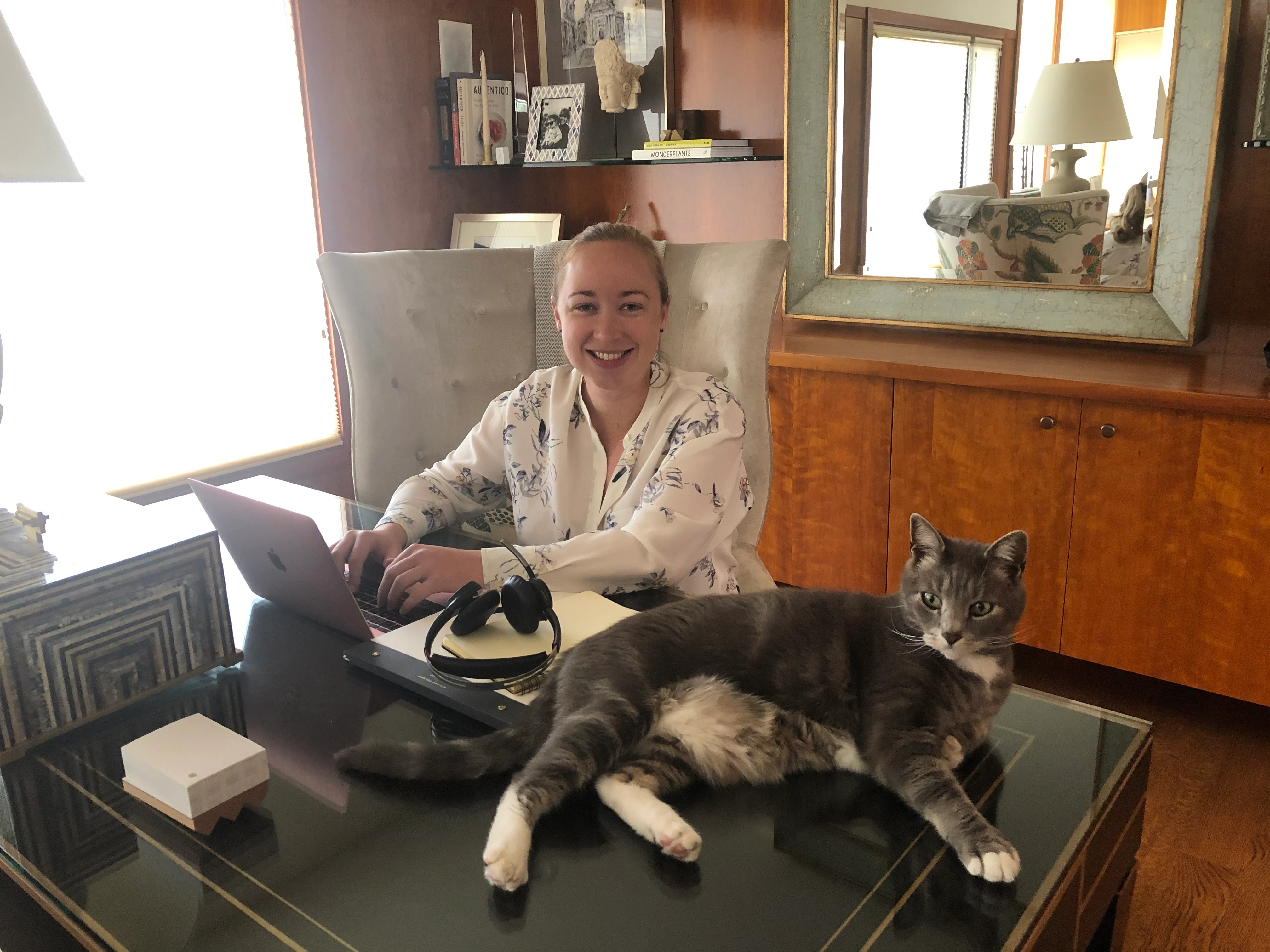Meet the Teams: SF Engineering
October 29, 2020
Bloomberg’s presence in San Francisco allows the company to tap into the vast engineering resources available in the Bay Area, and to engage more directly and consistently with the broader technology community. The engineering teams in the San Francisco Engineering office work on a variety of projects, including the construction of a next-generation quantitative analytics platform and a new digital asset management platform for Bloomberg’s more than 40 million media assets. Many of these projects have a strong focus on the use of open source technologies. This office’s growth and expansion over the last five years speaks to Bloomberg’s commitment to being a technology innovator.


Let’s meet the Head of Bloomberg’s San Francisco Engineering office. Mario Cadete moved from London to lead the San Francisco Engineering team three years ago, and has seen it grow from 25 to 80 people during that time.
Tell us about your role as Head of SF Engineering.
I have a dual role where I’m primarily the engineering manager of four teams that work on our next-generation quantitative analytics platform. Six other teams of software engineers report to me in my role overseeing the SF Engineering office as a whole. I’m also growing our team by tapping the Bay Area’s local talent pool of experts in open source technologies and cloud infrastructure.
What has your Bloomberg career path been like?
November marks my 20-year anniversary at Bloomberg. I had an interest in finance and technology, and that’s why I chose Bloomberg. I started working in New York on a corporate bond auction system. Then I moved to London and became a Team Lead working on electronic trading apps. Finance is a fast-moving industry with a lot of problems to solve, so there are a lot of opportunities available. My next role was starting a new team from scratch in our Data group, which enabled me to build it the way I wanted to build it. I spent about five years there. After that, I had an opportunity to lead an OTC derivatives group. Three years ago, I moved to San Francisco to head this office.
Bloomberg Engineering has been in San Francisco since 2015. What were some factors that prompted the expansion to this region?
The kind of next-generation platforms that we’ve been building here are built with open source software. We’ve worked to expand our reach and our talent pool by tapping into the Bay Area’s expertise with cloud-based technologies like Kubernetes and programming languages like Python and JavaScript. And we attract the attention of new recruits because Bloomberg is a very active contributor to open source projects like Project Jupyter, Apache Kafka, and Apache Spark.
What’s the culture like at the San Francisco office?
I work to create an environment that is social, collaborative, and collegiate. I interview every SF Engineering candidate personally because I want to develop a relationship and explain what’s important both to me and to us as an office. Our culture here is based on caring about one another’s success. There are a lot of helping hands that support our engineers starting from the day they are on-boarded. This manifests through colleagues freely sharing their time and expertise and also the communities they’ve built, to our diversity and inclusion efforts, to Bloomberg’s deep commitment to philanthropy.
In addition, we care about our own development as well. Bloomberg offers a broad catalog of training, from technical training to financial markets courses to leadership and communication programs. In SF, we go beyond that, also offering courses in machine learning and cloud technologies like Docker and Kubernetes. And we also offer workshops on storytelling and using the art of improv to improve communication skills and foster team building.
You’re very active in supporting Bloomberg Engineering’s diversity & inclusion initiatives. Talk about your role as a male ally and what inspires your enthusiastic advocacy for creating a more inclusive work environment.
After 20 years in the industry, I’ve seen times where there hasn’t been much diversity on teams, whether it’s race, gender, or even academic credentials. SF Engineering has a very diverse workforce, and we want to make it even more diverse with each new hire. Even more importantly, I think that everybody deserves a chance to succeed. We have a responsibility to be role models for people — both internally and externally — who don’t realize what’s possible.
I want to give opportunities to the best people. I see I’m in a fortunate position, and I’m also aware of the privilege that is associated with it. Because of this, I view myself as someone who can provide a bridge to opportunity for those who may not have had access in the past. It’s important to foster an inclusive work environment here at Bloomberg because it allows us to attract great engineers and to have our engineers collaborate in a place where they can achieve impactful results.
How do you foster culture on your team?
Before the pandemic, I didn’t realize how much time I spent on small interactions and touchpoints in which I was getting feedback and questions in an informal, almost accidental way, and building stronger relationships. Our culture is underpinned by really candid, effective communication. Whether at the office or working from home, I always try to lead by example to be an active listener, supportive, and transparent. I try to model a work ethic that’s not about hours, but about quality and balance for one’s mental health.
“We attract the attention of new recruits because Bloomberg is a very active contributor to open source projects like Project Jupyter, Apache Kafka, and Apache Spark.”
– Mario Cadete


Anne Zepecki is a relatively new addition to the SF Engineering team, having joined about a year ago. Here she shares her story of experiencing Bloomberg’s rather unique interview process.
You earned your CS degree in May 2019 and started full-time with Bloomberg last September. Tell us about the path that got you here.
My path to my current role at Bloomberg began in the fall of 2017, when I heard about Bloomberg through the National Center for Women & Information Technology (NCWIT), a group I first became involved with in high school. NCWIT shared Bloomberg job postings with the community and, after reading more about the firm, I became interested in how tech plays a role in finance. I decided to apply for the internship program. My on-site interview with Bloomberg stood out to me, as it was actually the first time I had ever been interviewed by a female engineer. In this case, I was interviewed by two. Many companies like to boast about how they support diversity and support women in tech specifically, but then you’re at the on-site, and you look around, and you don’t see that reflected in the workforce. When I came to Bloomberg and actually met female engineers (and as my interviewers!), this immediately signaled that Bloomberg was different.
My summer experience as an intern challenged me technically, but in a way that left me wanting to continue to solve the same sorts of fascinating problems after graduation. Community played a big role in my desire to return to Bloomberg, too — my colleagues were amazing, and I was excited to work with them and learn from them everyday. As an intern, I heard about the San Francisco office and the work that was going on out here, and I was lucky enough to connect with my current team. I was especially excited about Bloomberg’s involvement in the local tech ecosystem.
What are you working on now, and what open source technologies are you using?
My team is building out a Kubernetes-based data analysis development platform. We work with lots of different open source technologies, especially given that our product is derived from JupyterLab. My team heavily uses Kubernetes and Docker. Within the SF office, we have a lot of engineers who contribute regularly to the open source community.
What do you wish you knew about software engineering careers before you joined Bloomberg?
I wish I had learned more about how to take all the pieces of a system and put them together when I was in college! In classes, it’s easy to focus on more isolated components, so when you get to a real-world system, you have to adjust to the mindset where you take a step back and think about problems from an architectural and systems point of view.
What should new recruits know about the impact they can make at Bloomberg?
The great thing about Bloomberg is that because the culture is so inclusive and welcoming by nature, it’s really easy to get involved in the community and make an impact in your role right away. A few months back, I had the idea to create a discussion and reading group to bring together our employee resource groups here in San Francisco to speak about identity and intersectionality — and in the last few months, I’ve had the chance to bring this initiative to life. It is the enthusiasm and support of my colleagues that made this possible.
I also was fortunate enough to present an internal talk with one of my teammates to our Automated Testing Guild. It was wonderful to get to share some of the work my team is doing with others in the company, and it was a really cool experience for me to be able to do something like this less than a year into my full-time career.
“Many companies like to boast about how they support diversity and support women in tech specifically, but then you’re at the on-site, and you look around, and you don’t see that reflected in the workforce. When I came to Bloomberg and actually met female engineers (and as my interviewers!), this immediately signaled that Bloomberg was different.”
– Anne Zepecki


Distributed Systems Engineer Biju Nair joined Bloomberg just as the company began to seriously invest in open source, an effort that has only expanded.
You’ve been an engineer for more than 20 years. Tell us a little bit about your career path.
My interest in systems programming from school — along with the opportunity to work with senior engineers and researchers in data storage, information retrieval, and messaging and transaction processing systems — helped build a good foundation. From then on, all my work kept me current in these areas, while also helping large enterprises. When presented with an opportunity, I moved to the San Francisco office from the East Coast to work in the streaming data processing domain, and also to escape the cold weather! The move was seamless since internal mobility is the norm at Bloomberg.
What are you working on now?
Being able to process and derive insights from data-in-motion in real time is valuable to many Bloomberg products. Our team provides a platform that simplifies building such features. We use open source technologies like Apache Kafka, Kafka Streams, Kafka Connect, Apache Flink, and Kubernetes as our basic building blocks. It is always inspiring when a product team showcases what was built using our platform and how it helps their users.
What are some of the unique technical challenges associated with serving up financial data sets to Bloomberg’s clients millions of times a day?
Since Bloomberg’s products and services are used to serve capital markets data to major financial institutions and decision makers across the globe, we can’t compromise when it comes to low latency, high availability, scalability, and security. These factors influence our design, development, and deployment decisions every day.
What else would you like to share about your Bloomberg experience?
Bloomberg values that encourage doing the right thing, collaboration, and inclusion resonated with me from the start. Every day, I appreciate being able to work with some of the best engineers — both within the organization and outside through collaborations in open source projects. To top it off, knowing that the work we do helps many philanthropic causes is incredibly satisfying.


Software Engineering Team Lead Cheryl Quah started at Bloomberg eight years ago with a bachelor’s degree in physics, but her curiosity and enthusiasm for personal growth has fueled her development towards leadership in software development.
You started your career eight years ago at Bloomberg. What first attracted you to the company?
I studied physics in school. At the time, Bloomberg was one of the few companies willing to hire new graduates into software engineering roles even if they did not have traditional computer science backgrounds. To me, this was a strong sign of how much the company was willing to invest in us and train and develop us! This has turned out to be true throughout my time here.
In general terms, what are you working on now, and what open source technologies are you using?
Bloomberg has vast amounts of data across thousands of data sets. We are building a data analysis platform that allows our clients to use Python APIs to access these data sets and sophisticated financial analytics. This is an important paradigm shift because they can now use the tools of the scientific Python ecosystem — as well as interactive visualizations and applications — to meet their very specific research and workflow needs. They have access to much more customization and flexibility than before.
Bloomberg’s data analysis platform is built on top of the Project Jupyter ecosystem. As a company, we have funded significant initiatives in the Jupyter open source community, such as JupyterLab, Voilà, and more. I’m gratified that we are able to contribute substantially to these open source projects that are used globally.
What’s your best advice for helping your team members grow in their careers?
It’s important for each of us to own our growth and our career journeys. To me, this involves reflecting deeply on what your sources of satisfaction and motivation are, and what kinds of stretch opportunities you are looking for, knowing that all of these will likely evolve over time. Partner with your manager — help them understand what’s important to you. Being open to expressing this and being able to communicate it is how you gain agency over your own career journey, and how you can find a stronger sense of satisfaction in your work, and not just walk a path that someone else is laying out for you.
You were one of the three co-founders of the Bloomberg Women in Technology (BWIT) community in 2014. When you look at the inclusive environment for women in the Engineering department at Bloomberg today, what are you most proud of about the impact this community has had?
It’s been wonderful to see how strong the community is globally due to the hard work of its current leaders and active members, and how it serves as a channel for more than 1,100 members — both women and male allies — to meet and form strong relationships across teams and departments. When I see members exchange information, opportunities and advice, and support each other and inspire each other to reach for more, I see a network effect in action that benefits the whole company. For many of us, this sense of connection also keeps us more engaged at work.
In addition, the various Bloomberg communities (including their respective allyship initiatives), in combination with many other factors in the wider world, have contributed to a shift in the leadership dialogue to make it imperative that managers understand how to build inclusive environments.
“It’s important for each of us to own our growth and our career journeys. To me, this involves reflecting deeply on what your sources of satisfaction and motivation are, and what kinds of stretch opportunities you are looking for, knowing that all of these will likely evolve over time.”
– Cheryl Quah


Bloomberg serves up a massive amount of multimedia content every day. Kelsey Gloor’s team helps to make that photo and video content readily searchable and accessible.
Tell us a little bit about your career path.
I have worked in multimedia for 10 years. I did not expect to stay in one area for so long, but over my seven years at the New York office, I continued to grow technically, made connections across departments, and became invested in the product and long-term vision of the team. As I grew into a leadership role, I was given the opportunity to lead a new Multimedia Management team based in San Francisco. Getting the chance to start a team in a smaller, distributed engineering office has been the most rewarding work of my career.
What are you working on now?
This year we have taken on a large cross-departmental initiative to consolidate multiple video repositories into a universal media platform. This has been a long-term goal across all of our media engineering teams at Bloomberg, and will open opportunities for growth and development via a video search engine, seamless distribution pipeline, and improved content permissioning.
Search technology is critical to every product we provide. Throughout my career here, it has been great to see Bloomberg investing in making search accessible to all teams via our Bloomberg Foundational Search team and the Search Guild for engineers across the company to get more involved externally in the open source enterprise search community.
As a team, we use a managed instance of Apache Solr, which has enabled us to expose our archive of over 40 million media assets in a meaningful and intuitive way so clients can quickly find content relevant to them.
What do you think a team must have to be effective and healthy, particularly during this time of disruption?
We emphasize trust, open communication, and ingenuity. We are stronger when every member of the team has ownership and is empowered to advocate for new ideas. In many ways, this difficult time and transition to remote working has actually brought our team closer together.


Senior Software Engineer Reggie Dugard has spent over 20 years in financial services. He developed an extensive knowledge of Python, which he now puts to good use at Bloomberg.
What attracted you to Bloomberg?
Before Bloomberg, I had worked with a small hedge fund for many years, until they decided to close their California office. I enjoy the small-office culture and Bloomberg’s San Francisco office offers that same feel for me. I was also looking for a role where I could use my Python knowledge and was excited to discover that Python is a first-class language at Bloomberg.
You’re very involved in a variety of D&I Communities (employee resource groups). Tell us more about your participation and why these Communities are important to you.
I enjoy learning from people who have backgrounds and experiences different from my own. I think it makes me a better engineer to be exposed to different points of view. When I joined the company, I immediately joined BPROUD, our LGBT & Ally Community, which was very welcoming, but it took me a little while to realize that other communities, where I wasn’t part of the target group, would also welcome me as an ally. Now I’m also involved in communities like Bloomberg Women in Tech (BWIT) and Bloomberg Black In Tech (BBIT). I feel that having this exposure helps me appreciate the unique and common challenges faced by people from underrepresented groups, enabling me to be a more empathetic colleague.
Anything else you would like to share about your Bloomberg experience?
Bloomberg’s Corporate Philanthropy. I really feel good about working for a company that gives to philanthropic organizations. I also enjoy the many opportunities that are offered to volunteer for these organizations and the Dollars For Your Hours program that allows me to convert my volunteer hours into donations to non-profit organizations that I’m passionate about.
Check out some of the open roles with the teams in our SF Engineering office.